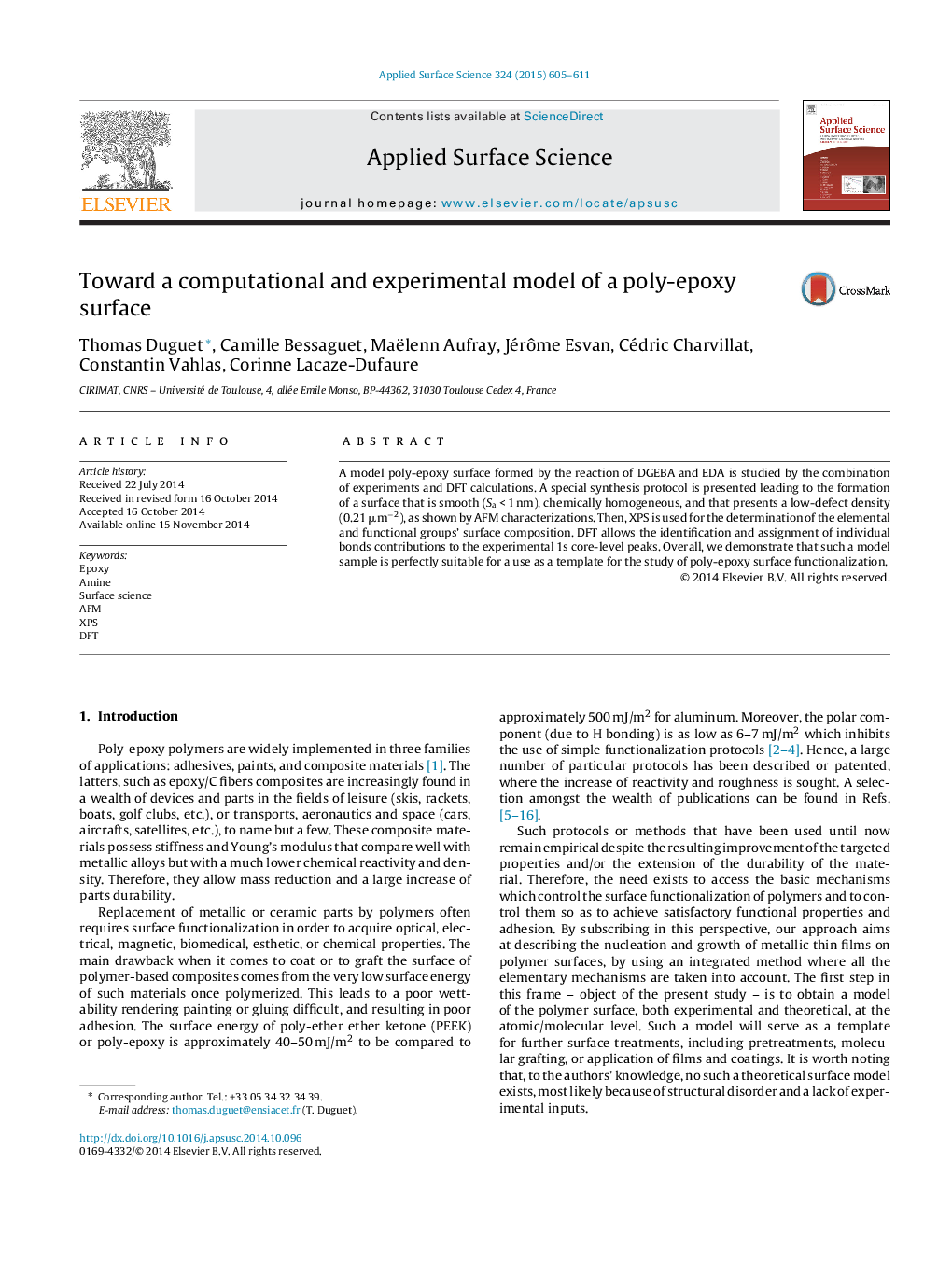| Article ID | Journal | Published Year | Pages | File Type |
|---|---|---|---|---|
| 5349072 | Applied Surface Science | 2015 | 7 Pages |
Abstract
A model poly-epoxy surface formed by the reaction of DGEBA and EDA is studied by the combination of experiments and DFT calculations. A special synthesis protocol is presented leading to the formation of a surface that is smooth (Sa < 1 nm), chemically homogeneous, and that presents a low-defect density (0.21 μmâ2), as shown by AFM characterizations. Then, XPS is used for the determination of the elemental and functional groups' surface composition. DFT allows the identification and assignment of individual bonds contributions to the experimental 1s core-level peaks. Overall, we demonstrate that such a model sample is perfectly suitable for a use as a template for the study of poly-epoxy surface functionalization.
Related Topics
Physical Sciences and Engineering
Chemistry
Physical and Theoretical Chemistry
Authors
Thomas Duguet, Camille Bessaguet, Maëlenn Aufray, Jérôme Esvan, Cédric Charvillat, Constantin Vahlas, Corinne Lacaze-Dufaure,
